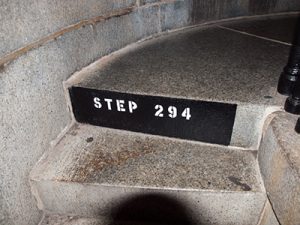A mislabeled British map
The still unknown decision by Col. Prescott to move closer to the British by advancing to Breed’s Hill
=
The Battle of Bunker Hill
Say What?
June 17th, 1775
Charlestown, Massachusetts
Approximately 2400 Americans vs. 3,000 British troops (several versions of the number exist) didn’t sound like terrible odds, until you factor in … experience.
The British troops were extensively trained, decently paid, and did we mention … extensively trained! They were not in the mood to back down. They already had that dubious distinction earlier in April. The battles of Lexington and Concord were fresh in their minds, whether they had fought there, or not. This was their “Remember the Alamo” moment.
Col. William Prescott had inexplicably decided that his orders to take a stand at Bunker Hill was just a suggestion! Bill decided that it would be better to move closer to the British and set up his defenses on the lower Breed’s hill, about a half mile closer to the Mystic River. It certainly confused the British because their battle map maker, British Army Lt. Page, had mislabeled the two hills. The British actually thought they were climbing up Bunker Hill!
It would take the British three attempts to make it up Breed’s Hill. Only because the colonial soldiers were running very low on ammunition did they finally retreat, and that was preceded by some ruthless hand-to-hand combat.
Although the battle was “won” by the British with casualties on both sides, the colonial “soldiers” were thrilled … which sounds like a lack of understanding about what just happened. They lost! But in their minds, dedication to a cause versus superior numbers and the training of the most lethal war machine in the world was a win!
When the newly appointed commander-in-chief, General George Washington arrived in Cambridge a few weeks later, he probably wondered how these untrained, disorganized, juvenile delinquents were even still alive!
Maybe he should have gone back to Mount Vernon after all!

Monumental Claustrophobia!

National Park Service Aerial Photo
Fast forward to Boston 2025.
Today a monument stands at the top of Bunker Hill marking the end of the two-and-a-half-mile Freedom Trail walking extravaganza, or the beginning of the Freedom Trail if you start from there.
From the air, Bunker Hill … ah, Breed’s Hill seems not much more than a mound of dirt, although green. In 1775, minus the four-story apartment buildings, brownstones and commercial and industrial buildings next to the river, the view was quite different to the colonial troops trying to control the narrative against the British.
Building a monument began in 1827 and finally finished in 1843 after extensive fundraising efforts, including the sale of land surrounding the original plot. The monument actually sits on Breed’s Hill, correctly sitting on the location where the main battle actually took place. It is closer to the harbour than its one-half mile northwest misnamed cousin, Bunker Hill, where the soldiers were told to originally build the redoubts. In this case the team on the ground knew better than the suits! Breed’s Hill was much closer to where the British were coming from. And it was much more intimidating to have the colonial soldiers in view than out of sight.

In my mind, as I climbed the narrow stairway to the top of the monument was if all the soldiers that participated in the battle had climbed these steps to the top … and back down … running into all of the other soldiers climbing up, the war would have been over in 15 minutes!
Exhaustion! Claustrophobia!
So, what if I can see the British ships in the harbour! Get me out of here!
At 211 feet tall, the top of Bunker Hill Monument is only accessible via 294 stairs up a tight spiral stairway. For safety, service animals cannot be accommodated inside the Monument and the lack of an elevator make it non-accessible for the mobility challenged.
Hint: You might want to go to the gym for a few weeks and hop on the Stair-Climber for some practice. You certainly don’t want to be those people, or that person who stops half-way up impeding the flow of traffic. There’s very little room to get around the person in front of you.
Just in case you have counted incorrectly there is even a stencil of the number 294 on the last step. It’s also interesting to note that either people were extremely slim in the 1800’s, or the committee decided to pocket the loose change that was left over from their many attempts at raising money!
“Tell the architect to widen the stairs? Ah! Nobody will ever climb up there anyway!”

And those four TINY windows scattered around each side of the top make it an odd tourist attraction unless you like being packed inside a sardine can (I would highly suggest visiting out of summer tourist season). It’s really an interesting view from all four sides … if you can get to the windows and not step on the kids belonging to their oblivious parents!
Don’t get me wrong, it’s one of those once in a lifetime, tourist things to do if you’re in Boston, especially if you are interested in history.
“I climbed the Bunker Hill Monument … that’s not really on Bunker Hill!”
With the lack of an elevator, not introduced by Otis Elevator Company until the 1850s, it’s unfortunate that not everyone has the opportunity to get to the top and see the city from one of the four relatively small glass windows. But no one should miss the museum next door.
With the brownstones and other houses and commercial buildings surrounding the hill, it might be difficult to imagine what it was like to be a colonial soldier on June 17, 1775. Whether it was Breed’s Hill, or the misnamed, Battle of Bunker Hill, the most professional, experienced army in the world at the time was heading toward you with one goal. End this silly revolution before it goes any further!
Saving Liberty
